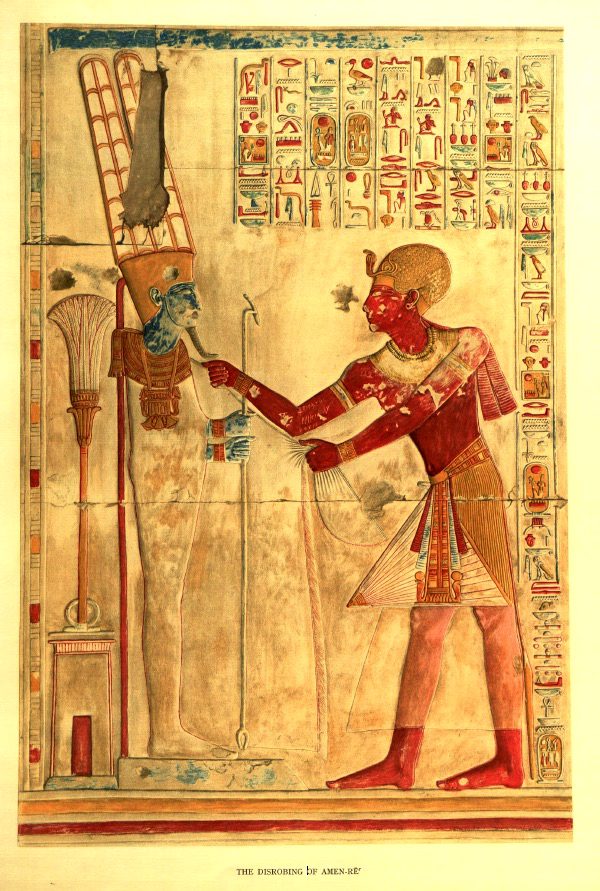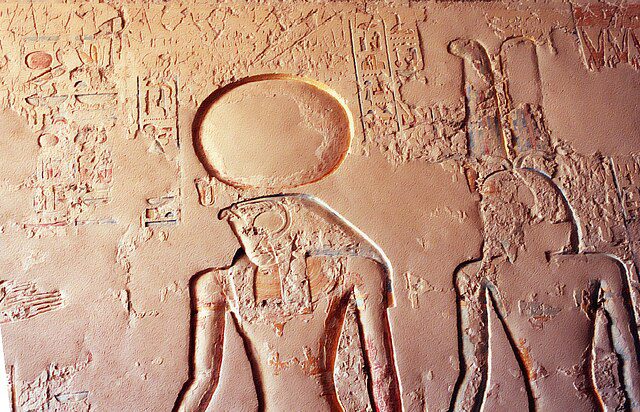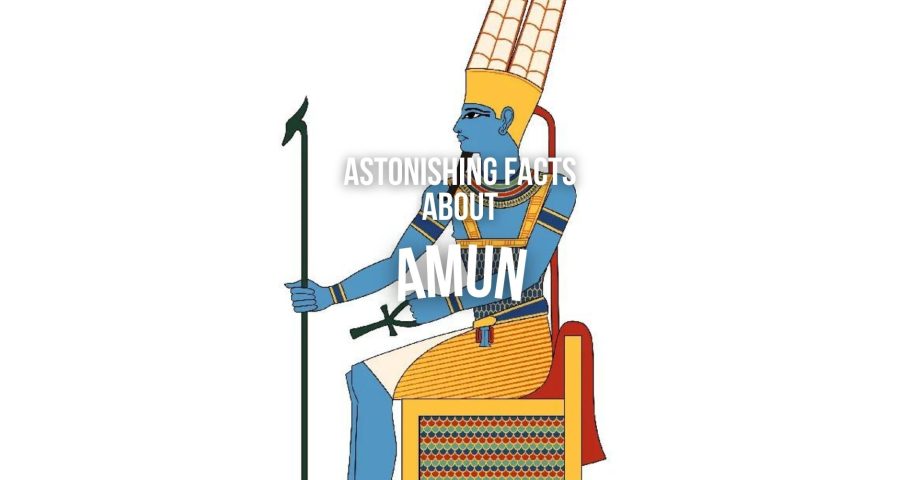Egyptian mythology is seemingly endless – teeming with fantastic deities and tales that people still follow to this day. One of the most important gods to arise from Egyptian legend is that of Amun, otherwise known as the god of the air. He was worshiped nationally across Egypt – making him one of the most famous figures in Egyptian religion bar none. Here are some fun facts about Amun, Egyptian god of the air.
1. Amun was one of the most important gods in Egyptian history.
Seen as a prominent deity even among some of the bigger names in Egyptian mythology, many people worshiped Amun for centuries – he was largely worshiped in what’s now the modern city of Luxor, but he was the head of the pantheon of gods – meaning he held prominence over many other deities.
2. Amun’s name means “invisible.”
Amun’s name derives from the word “imn,” which roughly translates as “invisible,” or even “hidden.” This is thought to refer to the god’s status as an omnipresent deity, one who you cannot see, but who is ever-present and associated with the wind and air.
3. Amun was seen as the creator of life.
Such was Amun’s prominence in the pantheon that many worshiped him as a creator god – in that he was the sole source of life and even the ruler of the universe. Consider him much in the same way as Greek legend refers to Zeus, king of the gods of Olympus.

4. Amun and Ra worked together.
One of several other powerful gods in Egyptian mythology was Ra, the sun god. While Ra represented the power of the ever-present sun, Amun represented the air. Together, they ruled as Amun-Ra, one of the most powerful amalgamated deities in the pantheon.
5. Amun had blue skin.
Amun is typically depicted as having blue skin to help associate him with the wind, sky, and air that he frequently represents. He is of human form, frequently seated on a throne, holding the key of life – an ankh – in one hand, and a scepter in the other.
6. Amun created himself!
Legend states that Amun created himself before producing all other living organisms, exiling himself in a state of invisibility. Many believe Amun to be the very first depiction of an all-seeing yet invisible god, much like other creator deities worshiped throughout religions across the world.
7. Amun wasn’t always human.
Despite the fact you frequently see Amun depicted as a man with blue skin, Egyptians frequently varied his appearance in ancient texts, as he’d appeared as a frog, a crocodile, a royal cobra, or even a ram-headed man. He even appears as a goose occasionally!
8. Amun was worshiped as part of a broader group of specific gods.
For all Amun is one of the most important gods in Egyptian mythology, he is also worshiped alongside seven other deities as part of the Ogdoad, a cabal praised at Hermopolis during the days of the Old Kingdom. Among the Ogdoad included Amunet, a goddess who was paired with Amun as consort.
9. Amun was once seen as a minor god.
While Amun’s role as a creator god eventually overtook prominence of several other deities in the pantheon, he was originally something of a minor figure in the mythology. He first appeared around 2686 BC, eventually becoming king of all gods around what’s known as the 12th Dynasty.
10. The 17th Dynasty saw Amun take on a new role.
As mentioned, Amun and Ra would eventually combine forces to become Amun-Ra. However, this wouldn’t occur until the 18th Dynasty of Egypt, when a New Kingdom was formed. For reference, Egyptian Dynasties ended around 332 BC!

FAQs about Amun
What are Amun’s powers?
Amun-Ra, as he became known, is thought to have had the power to create and even take away – he represented war and fertility in equal balance.
What is Amun’s symbol?
While Amun is frequently depicted as a blue man, he’s associated with rams, sometimes possessing the head of a ram in ancient drawings.
What does Amun wear on his head?
According to some sculptures and imagery, Amun wears a lavish crown made from a solar disc and a pair of feathers.
Further reading:
https://egyptianmuseum.org/deities-amun
https://www.worldhistory.org/amun/
Do you know any interesting facts about Amun? Share them in the comments below!









